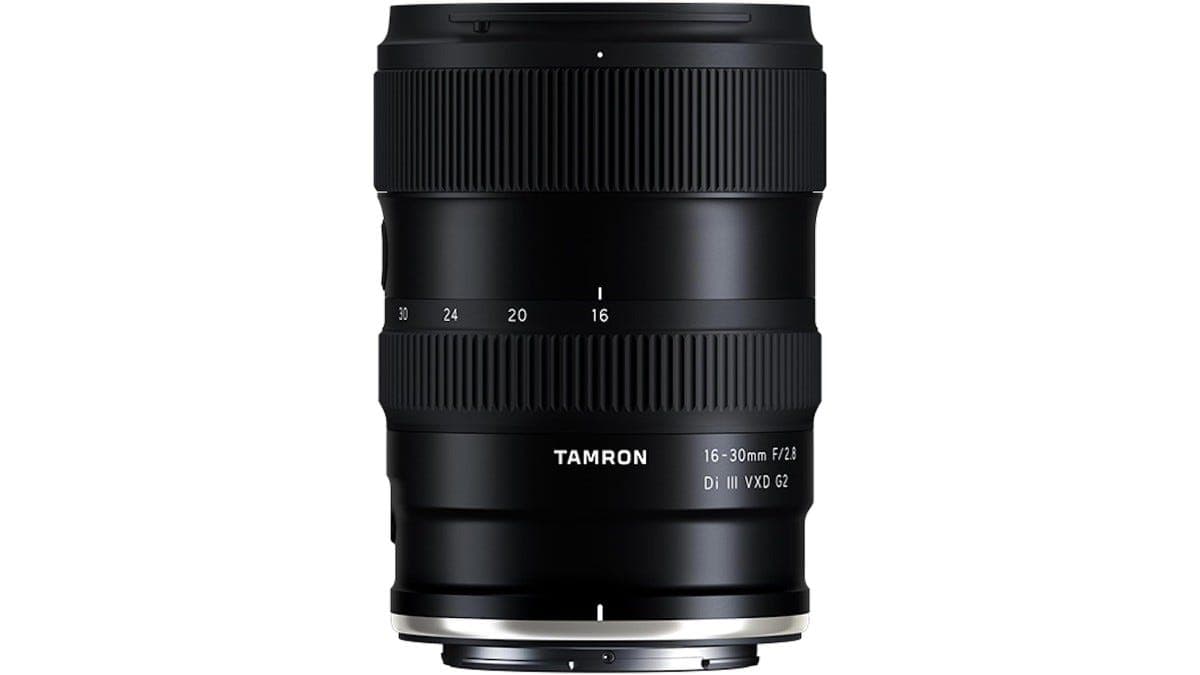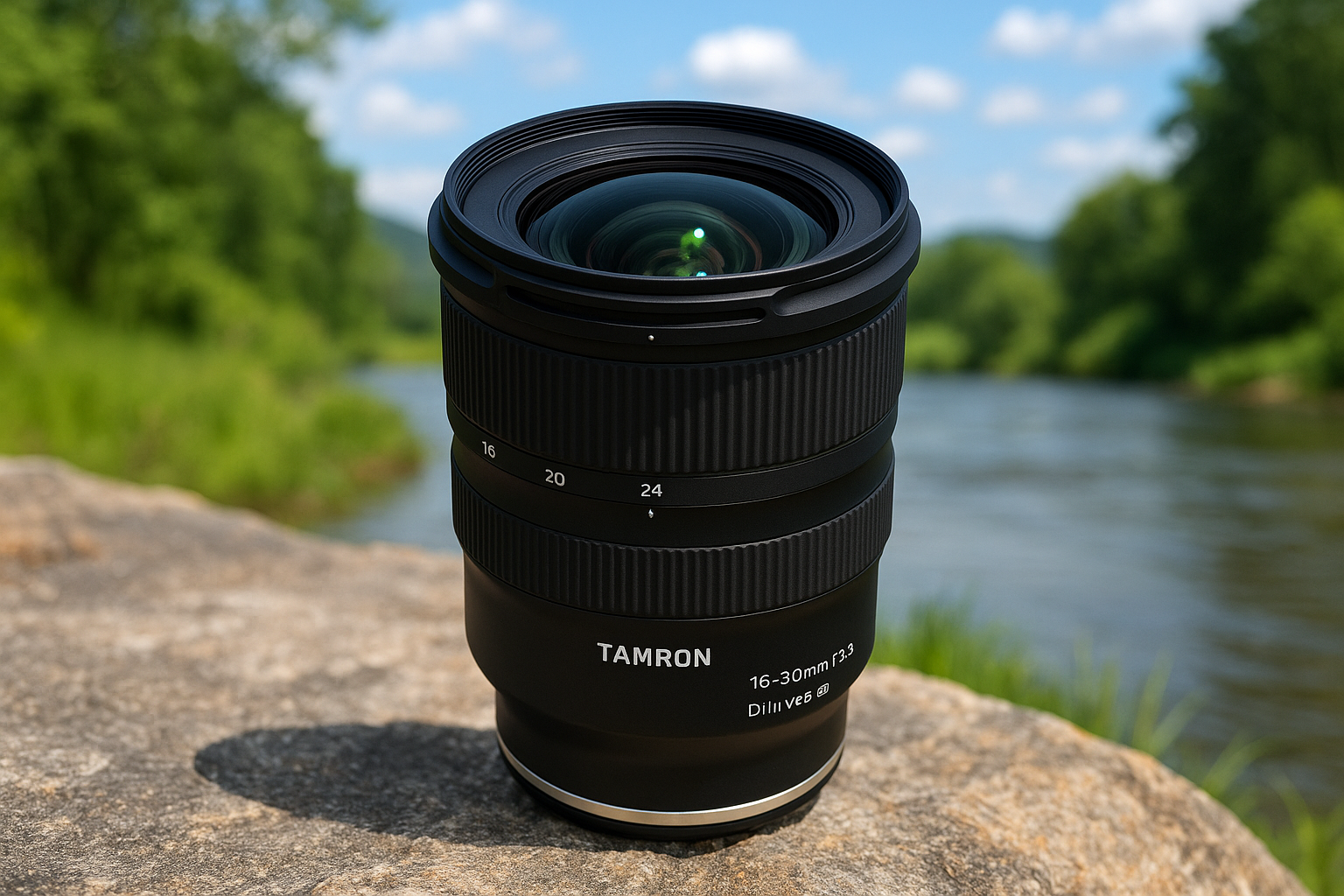
Tamron 16–30mm F/2.8 Di III VXD G2 for Sony E-Mount Listed for Pre-Order on Amazon US
Discover the latest offering in wide-angle photography with the Tamron 16–30mm F/2.8 Di III VXD G2 lens for Sony E-Mount, now available for pre-order on Amazon US. This article delves deep into its specifications, unique features and its potential impact on your photographic journey. From its advanced optical design to performance benchmarks, we’ll explore everything that makes this lens a must-have for both amateur and professional photographers.
Dev Orbit
August 2, 2025
Introduction
In today’s fast-evolving tech landscape, the need for quality imaging solutions is at an all-time high. Photographers face the challenge of finding the perfect lens that marries sharpness with versatility, especially in the wide-angle spectrum where distortion can be a significant concern. The introduction of the Tamron 16–30mm F/2.8 Di III VXD G2 for Sony E-Mount addresses this pain point, offering a professional-grade solution that promises exceptional clarity and performance. Why is this lens so significant? Because it represents a balance between design, user experience and performance—the trifecta that all photographers strive for. Let’s explore the compelling attributes and benefits that this lens brings to the table.
Specifications and Features
The Tamron 16–30mm F/2.8 Di III VXD G2 is engineered to enhance your photography experience with an impressive array of specifications:
Focal Length: 16–30mm
Aperture: f/2.8 constant through the zoom range
Mount: Sony E-Mount
Optical Design: 15 elements in 12 groups
Minimum Focusing Distance: 0.28m
Weight: 1170g
Dimensions: 117mm x 90mm
Weather Sealing: Yes, for durability in various conditions
VXD Autofocus System: Fast, quiet and accurate focusing
These features make it particularly appealing for various photography styles, including astrophotography, landscape and environmental portraits.
Performance in Real-World Conditions
The performance of a lens often shines brightest in real-world scenarios. The Tamron 16–30mm G2 has been lauded for its exceptional image quality. The lens is equipped with a unique VXD (Voice-coil Extreme-torque Drive) autofocus motor that ensures rapid and precise focusing, a critical factor for photographers aiming to capture fleeting moments. The autofocus operation is quiet, making it ideal for video as well.
Testing the lens in different light conditions reveals that it handles flare efficiently, thanks to Tamron's advanced coatings, which minimize ghosting and maximize contrast. Photographers have noted that even at the widest aperture of f/2.8, the sharpness remains impressive across the frame, making it an excellent choice for both landscape and architecture photography.
For example, during a sunset shoot in the mountains, several testers noted that the lens maintained color fidelity and contrast even when extending into the corners of the frame—something that can't be said for older designs.

Construction Quality and Ergonomics
Durability and user-friendliness are paramount in lens design, especially for those who spend long hours shooting in various environments. The Tamron G2 incorporates high-quality materials alongside comprehensive weather-sealing, making it resilient against moisture and dust. This construction allows photographers to shoot confidently in challenging conditions.
Moreover, the lens design features a ribbed rubberized surface for the zoom and focus rings, facilitating easy handling. This ergonomic consideration ensures that adjustments can be made swiftly, a crucial feature during fast-paced shoots.
Feedback from users indicates that the lens feels solid yet not overly heavy, striking a balance perfect for prolonged use. The inclusion of a customizable focus hold button and an AF/MF switch further enhances usability, allowing photographers to tailor the lens to their shooting style.

Comparing with Competitors
When evaluating the Tamron 16–30mm F/2.8 Di III VXD G2, it’s essential to consider how it stands against its competition, particularly other offerings within the same focal range such as the Sony 16–35mm f/2.8 GM and the Sigma 14–24mm f/2.8 DG DN. Each of these lenses has its strengths and weaknesses.
Sony 16–35mm f/2.8 GM: Known for its superior bokeh and overall sharpness but comes with a higher price tag and slightly less versatile focal length at the wide end.
Sigma 14–24mm f/2.8 DG DN: Offers a wider perspective, ideal for architectural and astrophotography, but can be more cumbersome in terms of size and weight.
In contrast, the Tamron G2 offers a sweet spot with its price point and essential features without compromising quality. It also provides slightly better close focusing capabilities, which can be advantageous when shooting details or experimenting with close-up photography.
Advanced Usage Tips
For photographers looking to maximize the potential of the Tamron 16–30mm G2, consider the following advanced usage tips:
Explore Close Focusing: Utilize the lens's close-focusing capability to get creative with macro-style compositions.
Experiment with Filters: The lens has a 77mm filter thread. Consider using ND or polarizing filters for landscape photography to enhance color saturation and control light.
Utilize the Focus Hold Button: Assign your preferred function to the focus hold button for quick access, enhancing your shooting efficiency.
Manual Focus Adjustments: Take advantage of the smooth manual focus option for nuanced adjustments when shooting video or in tricky focusing situations.
Firmware Updates: Regularly check for firmware updates from Tamron to ensure optimal performance and compatibility with the latest Sony E-Mount bodies.
While many lenses come with robust features, understanding how and when to utilize them can dramatically impact your photography results.
Conclusion
The Tamron 16–30mm F/2.8 Di III VXD G2 stands out as an incredible choice for both amateur and professional photographers seeking exceptional quality without straining budgets. Its blend of sharp optics, build quality and advanced features positions it uniquely within the marketplace. Whether you’re capturing sweeping landscapes or intimate close-ups, this lens empowers you to explore your creative horizons. Don't miss your chance—consider pre-ordering through Amazon US and take your photography to the next level. Share your thoughts and experiences below, or let us know how this lens has impacted your work!

Enjoyed this article?
Subscribe to our newsletter and never miss out on new articles and updates.
More from Dev Orbit

GitHub Copilot vs Tabnine (2025): Which AI Assistant is Best?
AI coding assistants are no longer futuristic experiments—they’re becoming essential tools in the modern developer’s workflow. In this review, we’ll compare GitHub Copilot and Tabnine head-to-head in 2025, exploring how each performs in real-world backend coding tasks. From productivity gains to code quality, we’ll answer the burning question: Which AI assistant should you trust with your code?

NestJS Knex Example: Step-by-Step Guide to Building Scalable SQL Application
Are you trying to use Knex.js with NestJS but feeling lost? You're not alone. While NestJS is packed with modern features, integrating it with SQL query builders like Knex requires a bit of setup. This beginner-friendly guide walks you through how to connect Knex with NestJS from scratch, covering configuration, migrations, query examples, real-world use cases and best practices. Whether you're using PostgreSQL, MySQL or SQLite, this comprehensive tutorial will help you build powerful and scalable SQL-based applications using Knex and NestJS.

How to Build an App Like SpicyChat AI: A Complete Video Chat Platform Guide
Are you intrigued by the concept of creating your own video chat platform like SpicyChat AI? In this comprehensive guide, we will walk you through the essentials of building a robust app that not only facilitates seamless video communication but also leverages cutting-edge technology such as artificial intelligence. By the end of this post, you'll have a clear roadmap to make your video chat application a reality, incorporating intriguing features that enhance user experience.

🚀 Mastering Python Automation in 2025: Deep Insights, Real-World Use Cases & Secure Best Practices
Streamline your workflows, eliminate manual overhead and secure your automation pipelines with Python — the most powerful tool in your 2025 toolkit.

How my Mindfulness App Triggered a Hidden Anxiety Cycle
Have you ever thought a mindfulness app was the key to tranquility, only to find it triggered unexpected feelings of anxiety? This article unfolds my journey of using a mindfulness app, its surprising consequences on my mental health, and what I learned along the way. Tune in if you're keen to explore the intricacies of anxiety cycles and how mindfulness might sometimes amplify rather than alleviate them.

Data Validation in Machine Learning Pipelines: Catching Bad Data Before It Breaks Your Model
In the rapidly evolving landscape of machine learning, ensuring data quality is paramount. Data validation acts as a safeguard, helping data scientists and engineers catch errors before they compromise model performance. This article delves into the importance of data validation, various techniques to implement it, and best practices for creating robust machine learning pipelines. We will explore real-world case studies, industry trends, and practical advice to enhance your understanding and implementation of data validation.
Have a story to tell?
Join our community of writers and share your insights with the world.
Start Writing